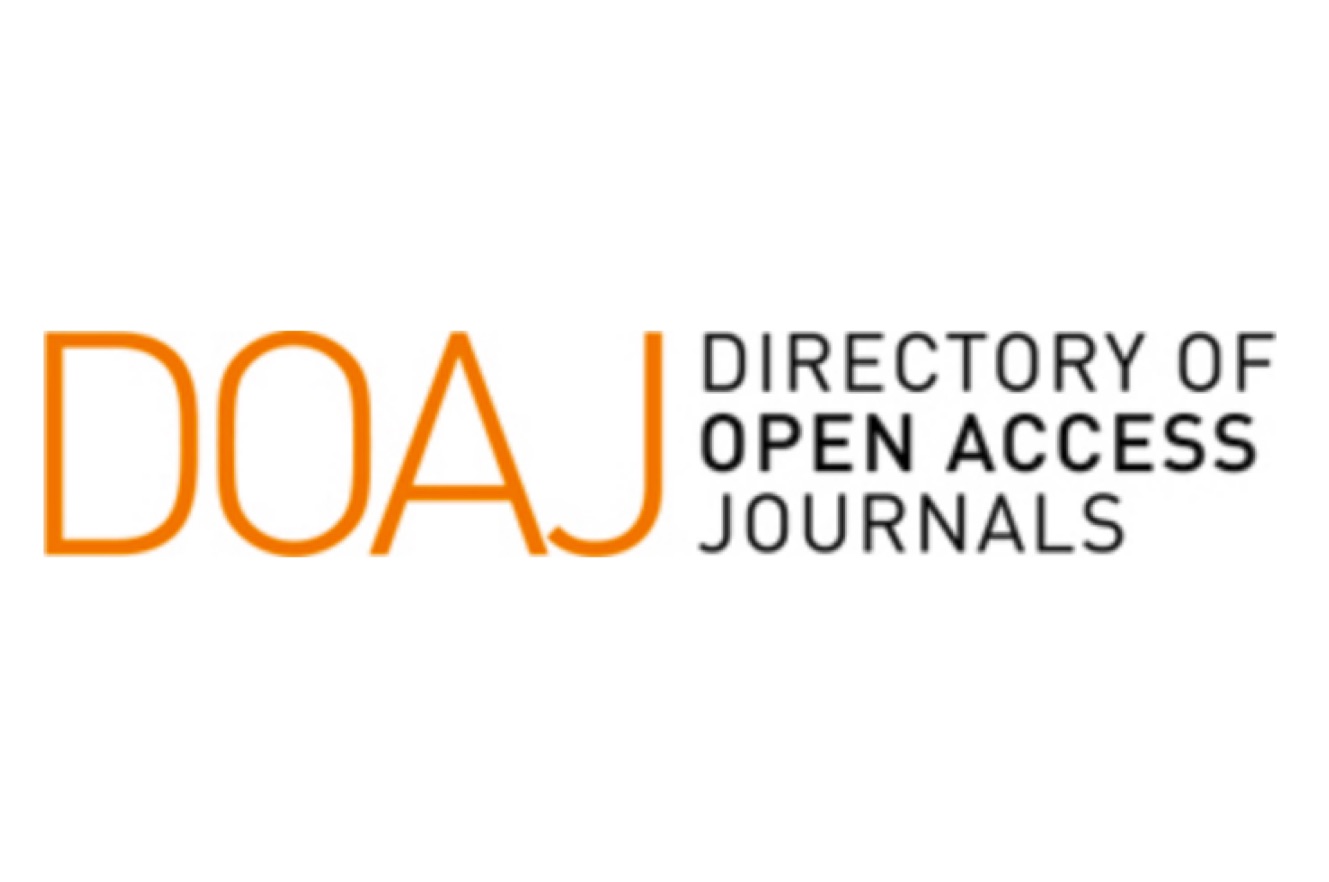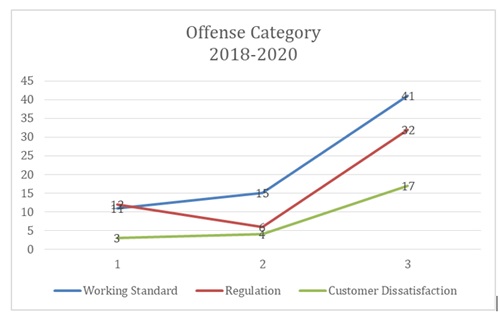Leading the Digital Revolution Examining the Impact of Digital Leadership on Work Performance and Organizational Commitment in the Kawasan Industri Mitra (KIM)
Downloads
This research aims to examine and analyze the effect of digital leadership on work performance through organizational commitment. The research population is all employees in the Mitra Industrial Area (KIM) Karawang, West Java. A total of 214 samples were taken using random sampling. The digital leadership variable uses two dimensions with three indicators each, the organizational commitment variable uses three dimensions with three indicators each, and the work performance variable uses three indicators. The results obtained show a positive and significant effect of digital era leadership on work performance and a positive and significant effect of organizational commitment on work performance. These results are analyzed together with the dimensions used. The results obtained from leadership in the employee dimension are greater than the innovation focus dimension. The greatest organizational commitment is in the normative commitment dimension.
Downloads
Balkundi, P. and Kilduff, M. (2005) ‘The ties that lead: A social network approach to leadership', Leadership Quarterly, 16(6), pp. 941–961. Available at: https://doi.org/10.1016/j.leaqua.2005.09.004.
Collins, C.J. and Clark, K.D. (2003) ‘Strategic Human Resource Practices,Top management Team Social Networks,and firm performance:The role of human resource practices in creating organizational competitive advantage', Academy of management Journal, 46(6), pp. 740–751.
Com, W.A., Oberer, B. and Erkollar, A. (2018) Leadership 4.0: Digital Leaders in the Age of Industry 4.0, International Journal of Organizational Leadership.
Crossley, C.D., Cooper, C.D. and Wernsing, T.S. (2013) ‘Making things happen through challenging goals: Leader Proactivity, Trust, and Business-Unit Performance', Journal of Applied Psychology, 98(3), pp. 540–549. Available at: https://doi.org/10.1037/a0031807.
Delegach, M. et al. (2017) ‘A focus on commitment: the roles of transformational and transactional leadership and self-regulatory focus in fostering organizational and safety commitment', European Journal of Work and Organizational Psychology, 26(5), pp. 724–740. Available at: https://doi.org/10.1080/1359432X.2017.1345884.
Derue, D.S. and Ashford, S.J. (2010) Who Will lead and who will follow?A scial Process of Leadership Identity construction in Organizations.
Druskat, V.U. and Wolff, S.B. (1999) Effects and Timing of Developmental Peer Appraisals in Self-Managing Work Groups, Journal of Applied Psychology.
Edmondson, A.C. (2003) Speaking Up in the Operating Room: How Team Leaders Promote Learning in Interdisciplinary Action Teams.
Fischer, T., Dietz, J. and Antonakis, J. (2017a) ‘Leadership Process Models: A Review and Synthesis', Journal of Management, 43(6), pp. 1726–1753. Available at: https://doi.org/10.1177/0149206316682830.
Fischer, T., Dietz, J. and Antonakis, J. (2017b) ‘Leadership Process Models: A Review and Synthesis', Journal of Management, 43(6), pp. 1726–1753. Available at: https://doi.org/10.1177/0149206316682830.
Hackman, J.R. and Wageman, R. (2005) A Theory of Team Coaching, Source: The Academy of Management Review.
Hill, N.S., Kang, J.H. and Seo, M.G. (2014) ‘The interactive effect of leader-member exchange and electronic communication on employee psychological empowerment and work outcomes', Leadership Quarterly, 25(4), pp. 772–783. Available at: https://doi.org/10.1016/j.leaqua.2014.04.006.
Ho, V.T. and Pollack, J.M. (2014) ‘Passion isn't always a good thing: Examining entrepreneurs' network centrality and financial performance with a dualistic model of passion', Journal of Management Studies, 51(3), pp. 433–459. Available at: https://doi.org/10.1111/joms.12062.
Houghton, J.D. et al. (2015) ‘Sharing is caring: Toward a model of proactive caring through shared leadership', Human Resource Management Review, 25(3), pp. 313–327. Available at: https://doi.org/10.1016/j.hrmr.2014.12.001.
Hsiao, H.C. and Chang, J.C. (2011) ‘The role of organizational learning in transformational
leadership and organizational innovation', Asia Pacific Education Review, 12(4), pp. 621–631. Available at: https://doi.org/10.1007/s12564-011-9165-x.
Hur, W., Park, M. and Kim, J. (2010) ‘The Role of Commitment on The Customer Benefits-Loyalty Relationship in Mobile Service Industry', The Service Industries Journal, 30 (14), pp. 293–309. Available at: https://doi.org/10.1080/02642060802629877.
Kellett, J.B., Humphrey, R.H. and Sleeth, R.G. (2006) ‘Empathy and the emergence of task and relations leaders', Leadership Quarterly, 17(2), pp. 146–162. Available at: https://doi.org/10.1016/j.leaqua.2005.12.003.
Kim, K.Y., Eisenberger, R. and Baik, K. (2016) ‘Perceived organizational support and affective organizational commitment: Moderating influence of perceived organizational competence', Journal of Organizational Behavior, 37(4), pp. 558–583. Available at: https://doi.org/10.1002/job.2081.
Labrague, L.J. et al. (2018) ‘Organizational commitment and turnover intention among rural nurses in the Philippines: Implications for nursing management', International Journal of Nursing Sciences, 5(4), pp. 403–408. Available at: https://doi.org/10.1016/j.ijnss.2018.09.001.
Leroy, H. et al. (2012) ‘Behavioral integrity for safety, priority of safety, psychological safety, and patient safety: A team-level study', Journal of Applied Psychology, 97(6), pp. 1273–1281. Available at: https://doi.org/10.1037/a0030076.
Liao, S. hsien, Fei, W.C. and Liu, C.T. (2008) ‘Relationships between knowledge inertia, organizational learning and organization innovation', Technovation, 28(4), pp. 183–195. Available at: https://doi.org/10.1016/j.technovation.2007.11.005.
Logan, M.S. and Ganster, D.C. (2007) ‘The effects of empowerment on attitudes and performance: The role of social support and empowerment beliefs', Journal of Management Studies, 44(8), pp. 1523–1550. Available at: https://doi.org/10.1111/j.1467-6486.2007.00711.x.
Mihardjo, L.W. et al. (2019) ‘The Influence of Digital Leadership on Innovation Management Based on Dynamic Capability: Market Orientation as a Moderator', Management Science Letters, 9.
Mohd Zainal Munshid, H. and Rosli, M. (2012) ‘The relationship between group cohesiveness and performance: An empirical study of cooperatives movement in Malaysia', International Journal of Cooperative Studies, 1(1), pp. 15–20. Available at: http://www.worldscholars.org/index.php/ijcs/article/view/110.
Ng, T.W.H. (2015) ‘The incremental validity of organizational commitment, organizational trust, and organizational identification', Journal of Vocational Behavior, 88, pp. 154–163. Available at: https://doi.org/10.1016/j.jvb.2015.03.003.
Ngo, H.Y., Foley, S. and Loi, R. (2009) ‘Family friendly work practices, organizational climate, and firm performance: A study of multinational corporations in Hong Kong', Journal of Organizational Behavior, 30(5), pp. 665–680. Available at: https://doi.org/10.1002/job.606.
Oberer, B. and Erkollar, A. (2018) ‘Leadership 4.0: Digital leaders in the age of industry 4.0', International journal of organizational leadership, pp. 1–9.
Oztemel, E. and Gursev, S. (2020) ‘Literature review of Industry 4.0 and related technologies', Journal of Intelligent Manufacturing, 31(1), pp. 127–182. Available at: https://doi.org/10.1007/s10845-018-1433-8.
Rosso, B.D., Dekas, K.H. and Wrzesniewski, A. (2010) ‘On the meaning of work: A theoretical integration and review', Research in Organizational Behavior, pp. 91–127. Available at: https://doi.org/10.1016/j.riob.2010.09.001.
Searle, R. et al. (2011) ‘Trust in the employer: The role of high-involvement work practices and procedural justice in european organizations', International Journal of Human Resource Management, 22(5), pp. 1069–1092. Available at: https://doi.org/10.1080/09585192.2011.556782.
Vera, D. and Crossan, M. (2004) Strategic Leadership and Organizational Learning, Source: The Academy of Management Review.
Zaccaro, S.J. et al. (2015) ‘The influence of higher order cognitive capacities on leader organizational continuance and retention: The mediating role of developmental experiences', Leadership Quarterly, 26(3), pp. 342–358. Available at: https://doi.org/10.1016/j.leaqua.2015.03.007.
Zhang, H. et al. (2012) ‘Servant leadership, organizational identification, and work-to-family enrichment: The moderating role of work climate for sharing family concerns', Human Resource Management, 51(5), pp. 747–767. Available at: https://doi.org/10.1002/hrm.21498.
Zhu, W., Chew, I.K.H. and Spangler, W.D. (2005) ‘CEO transformational leadership and organizational outcomes: The mediating role of human-capital-enhancing human resource management', Leadership Quarterly, 16(1), pp. 39–52. Available at: https://doi.org/10.1016/j.leaqua.2004.06.001.
JMIL Jurnal Manajemen Industri dan Logistik (Journal of Industrial and Logistics Management) is an Open Access Journal. The authors who publish the manuscript in JMIL Jurnal Manajemen Industri dan Logistik agree to the following terms:

JMIL Jurnal Manajemen Industri dan Logistik is licensed under a Creative Commons Attribution 4.0 International License. This permits anyone to copy, redistribute, remix, transmit and adapt the work provided the original work and source is appropriately cited.
This means:
(1) Under the CC-BY license, authors retain ownership of the copyright for their article, but authors grant others permission to use the content of publications in JMIL Jurnal Manajemen Industri dan Logistik in whole or in part provided that the original work is properly cited. Users (redistributors) of JMIL Jurnal Manajemen Industri dan Logistik are required to cite the original source, including the author's names, JMIL Jurnal Manajemen Industri dan Logistik as the initial source of publication, year of publication, volume number, issue, and Digital Object Identifier (DOI); (2) Authors grant JMIL Jurnal Manajemen Industri dan Logistik the right of first publication. Although authors remain the copyright owner.




























